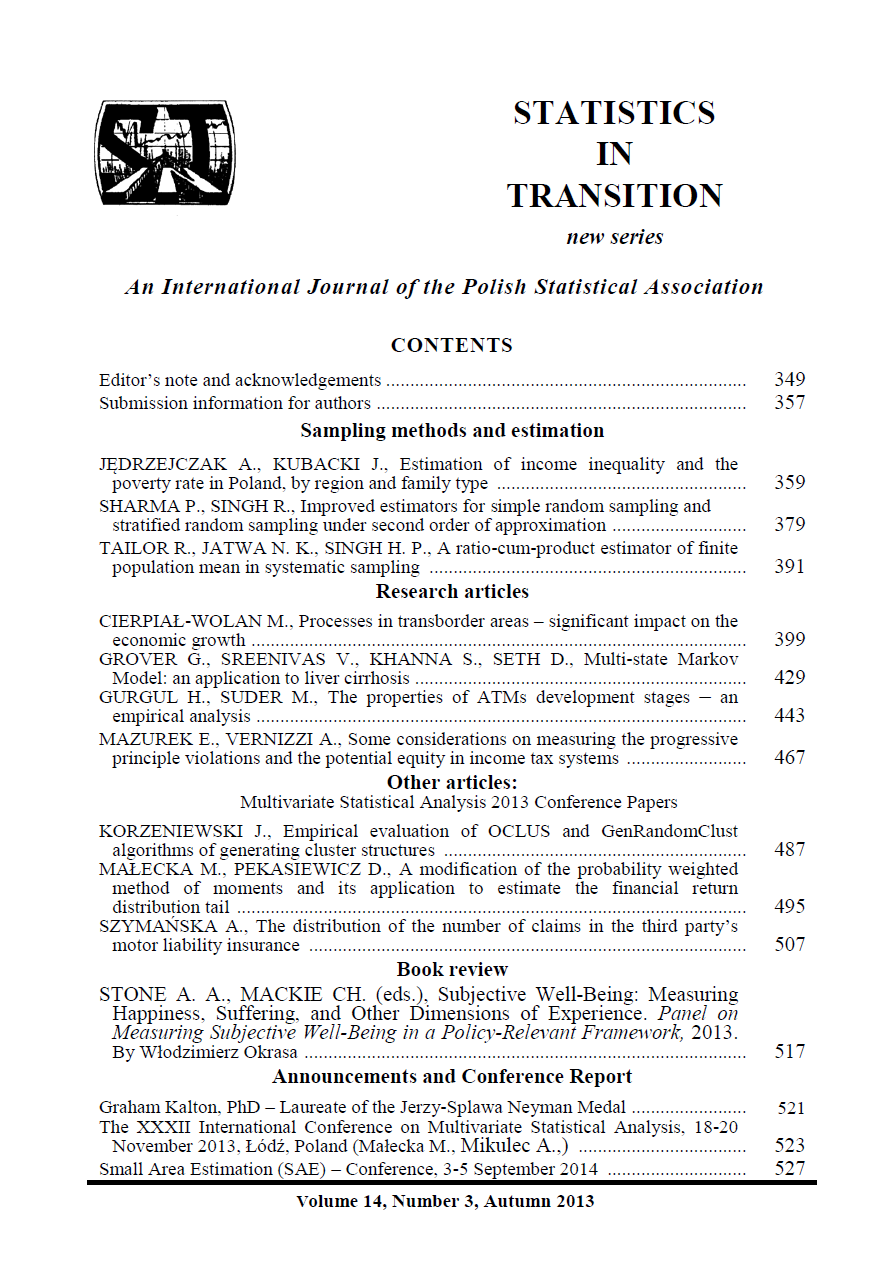ARTICLE
ABSTRACT
The issue of fitting the tail of the random variable with an unknown distribution plays a pivotal role in finance statistics since it paves the ground for estimation of high quantiles and subsequently offers risk measures. The parametric estimation of fat tails is based on the convergence to the generalized Pareto distribution (GPD). The paper explored the probability weighted method of moments (PWMM) applied to estimation of the GPD parameters. The focus of the study was on the tail index, commonly used to characterize the degree of tail fatness. The PWMM algorithm requires specification of the cdf estimate of the so-called excess variable and depends on the choice of the order of the probability weighted moments. We suggested modification of the PWMM method through the application of the level crossing empirical distribution function. Through the simulation study, the paper investigated statistical properties of the GPD shape parameter estimates with reference to the PWMM algorithm specification. The simulation experiment was designed with the use of fat-tailed distributions with parameters assessed on the basis of the empirical daily data for DJIA index. The results showed that, in comparison to the commonly used cdf formula, the choice of the level crossing empirical distribution function improved the statistical properties of the PWMM estimates. As a complementary analysis, the PWMM tail estimate of DJIA log returns distribution was presented.
KEYWORDS
PWMM, generalized Pareto distribution, tail estimate, distribution function estimate
REFERENCES
BIAŁEK J., (2014). Simulation Study of an Original Price Index Formula. Communications in Statistics – Simulation and Computation 43(2), 285–297.
HOSTING J. R. M., WALLIS J. R., (1987). Parameter and Quantile Estimation for the Generalized Pareto Distribution. Technometrics 29, 339–349.
HUANG M. L., BRILL P. H., (1999). A level crossing quantile estimation method, Statistics & Probability Letters 45, 111–119.
LANDWEHR J. M., MATALAS N. C., WALLIS J. R., (1979). Probability Weighted Moments Compared with Some Traditional Techniques in Estimating Gumbel Parameters and Quantiles. Water Resources Research 15(5), 1055–1064.
MAŁECKA M., PEKASIEWICZ D., (2013). Application of probability weighted method of moments to estimation of financial return distribution tail in: Proceedings of the 31st International Conference Mathematical Methods in Economics 2013 [ed. Hana Vojáčková], College of Polytechnics Jihlava, 569–574.
MCNEIL A. J., FREY R., EMBRACHTS P., (2005). Quantitative Risk Management: Concepts, Techniques and Tools. Princeton University Press, Princetown.
RASMUSSEN P. F., (2001). Generalized probability weighted moments: Application to the generalized Pareto distribution. Water Resources Research 37(6), 1745–1751.
SECKIN N., YURTAL R., HAKTAIR T., DOGAN A., (2010). Comparison of Probability Weighted Moments and Maximum Likelihood Methods Used in Flood Frequency Analysis for Ceyhan River Basin. The Arabian Journal for Science and Engineering 35, 49–69
